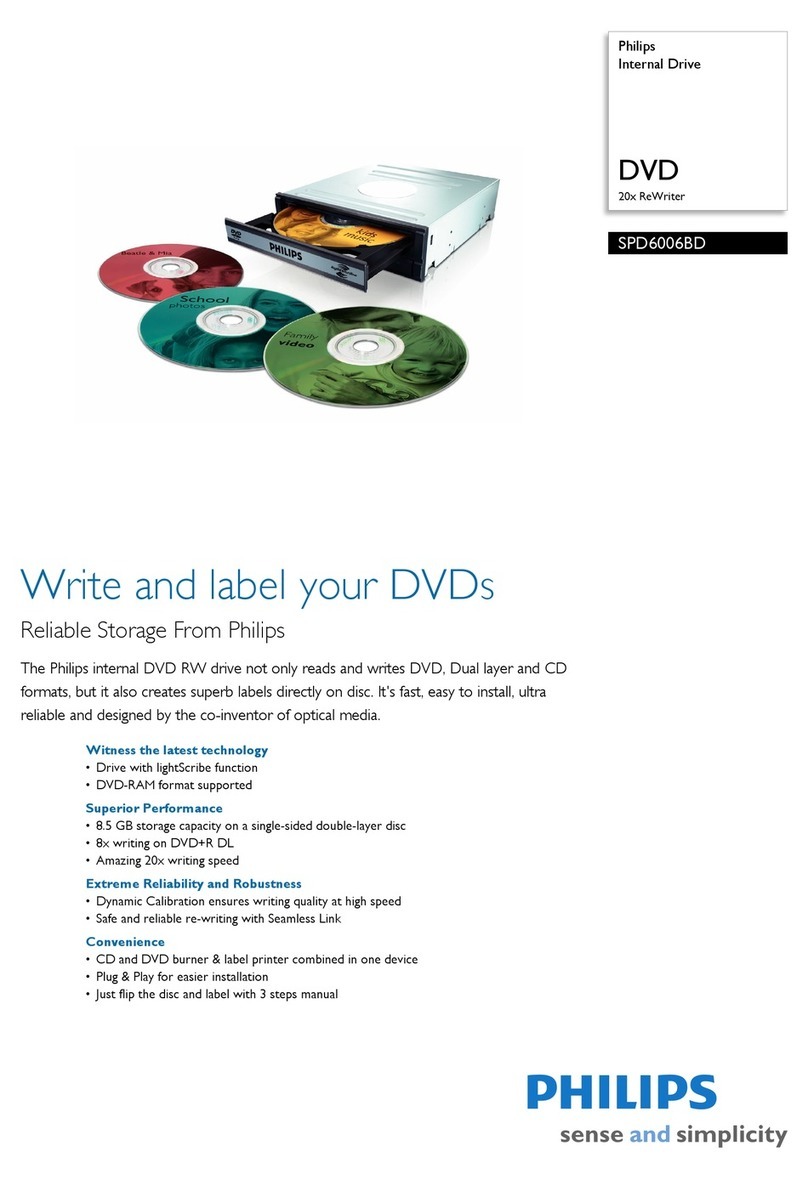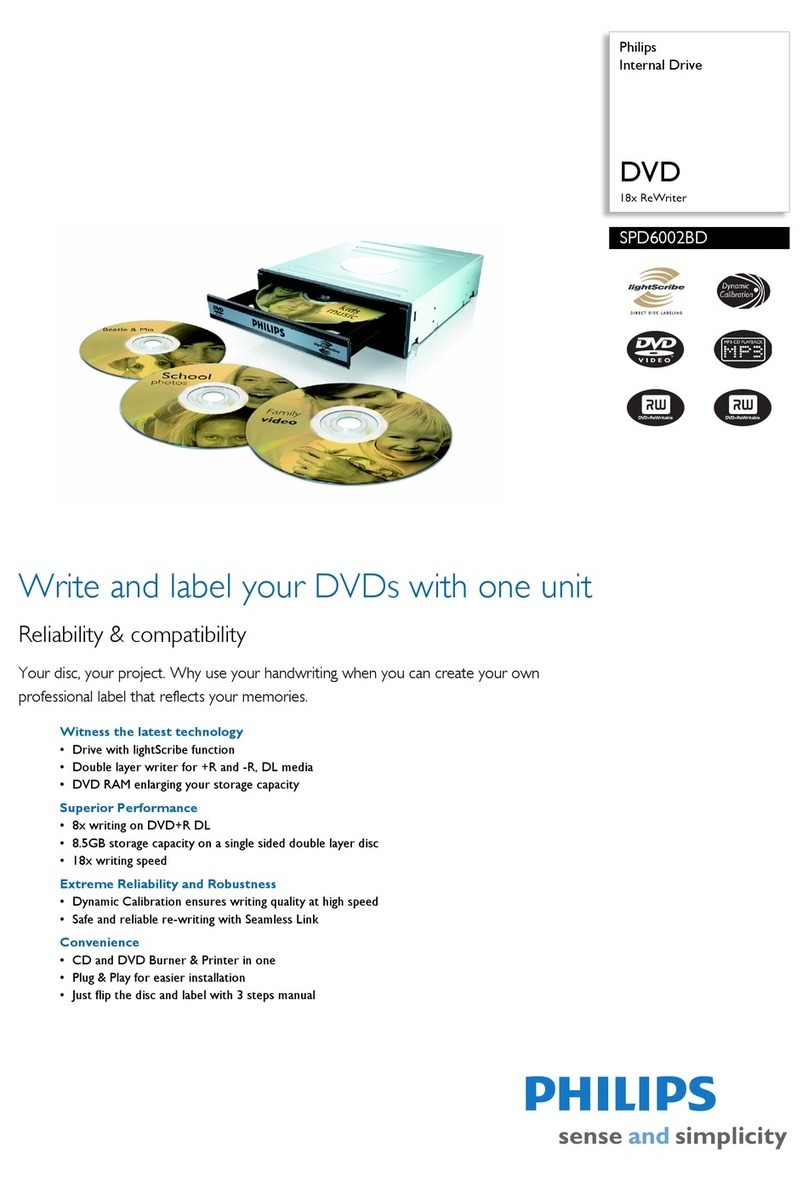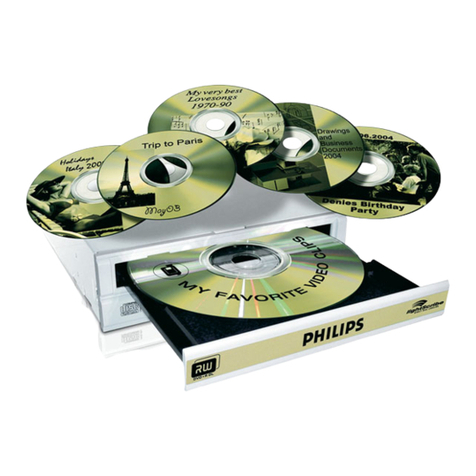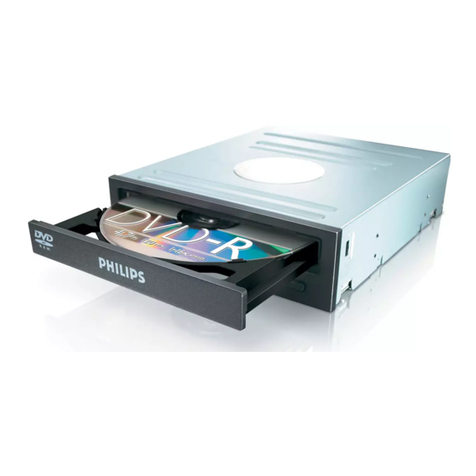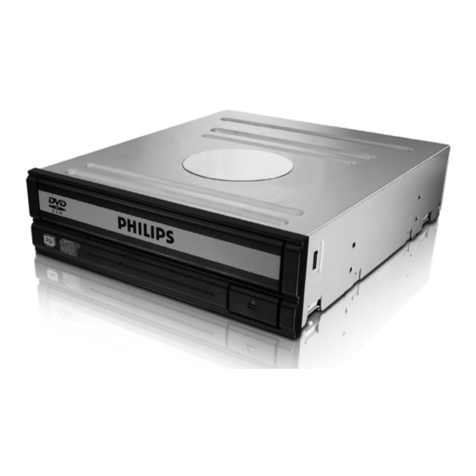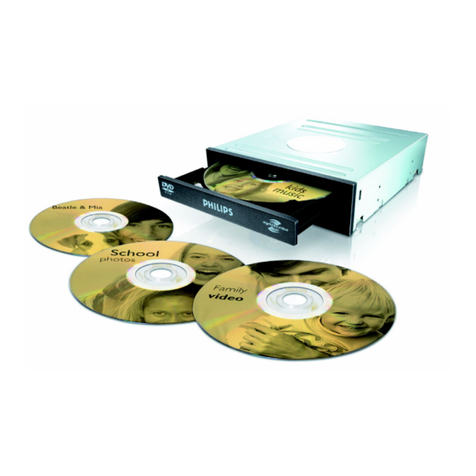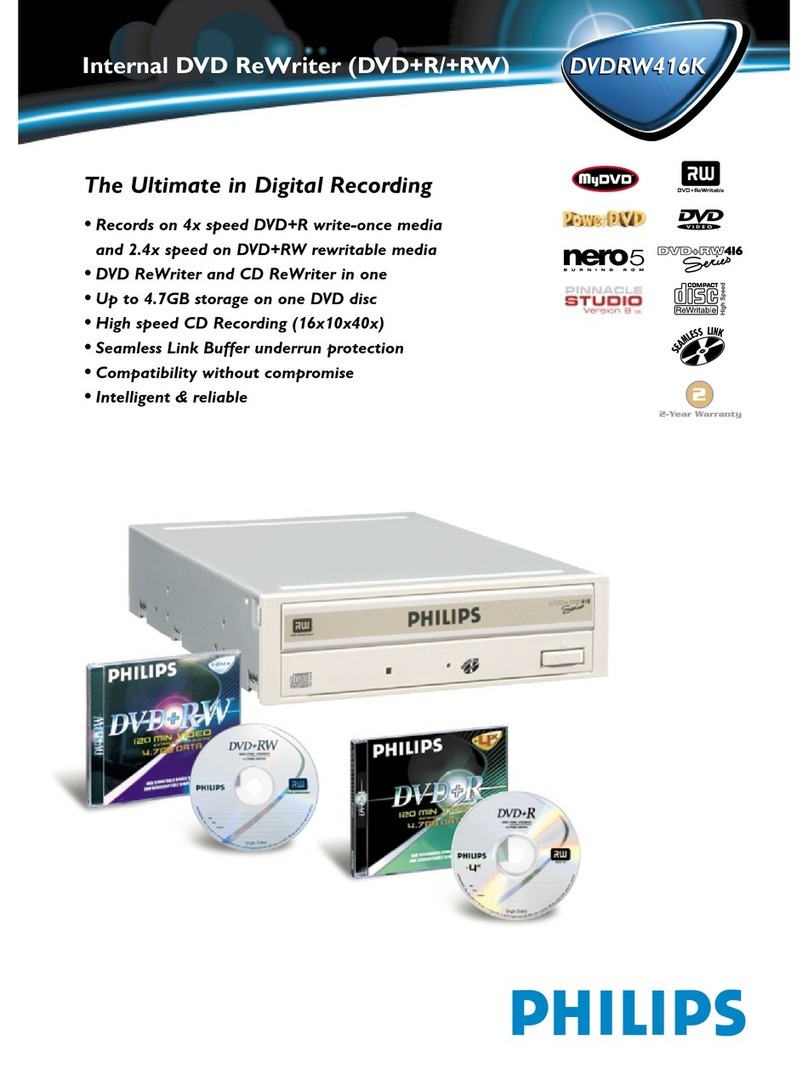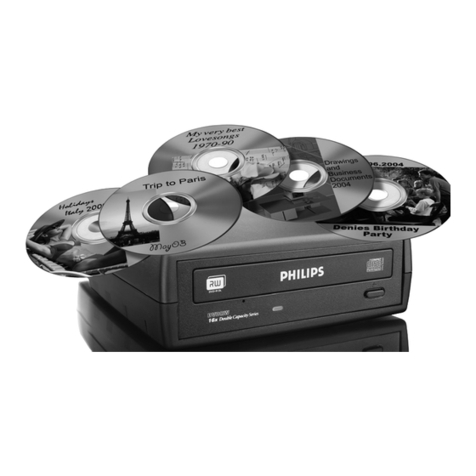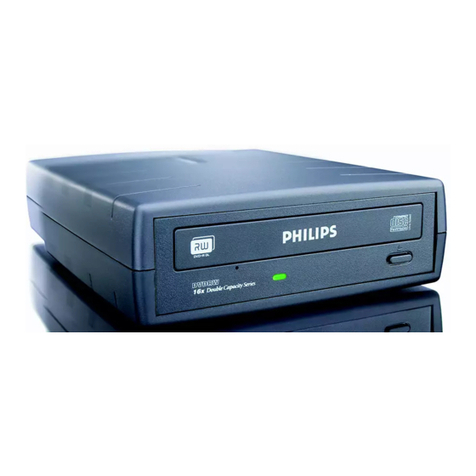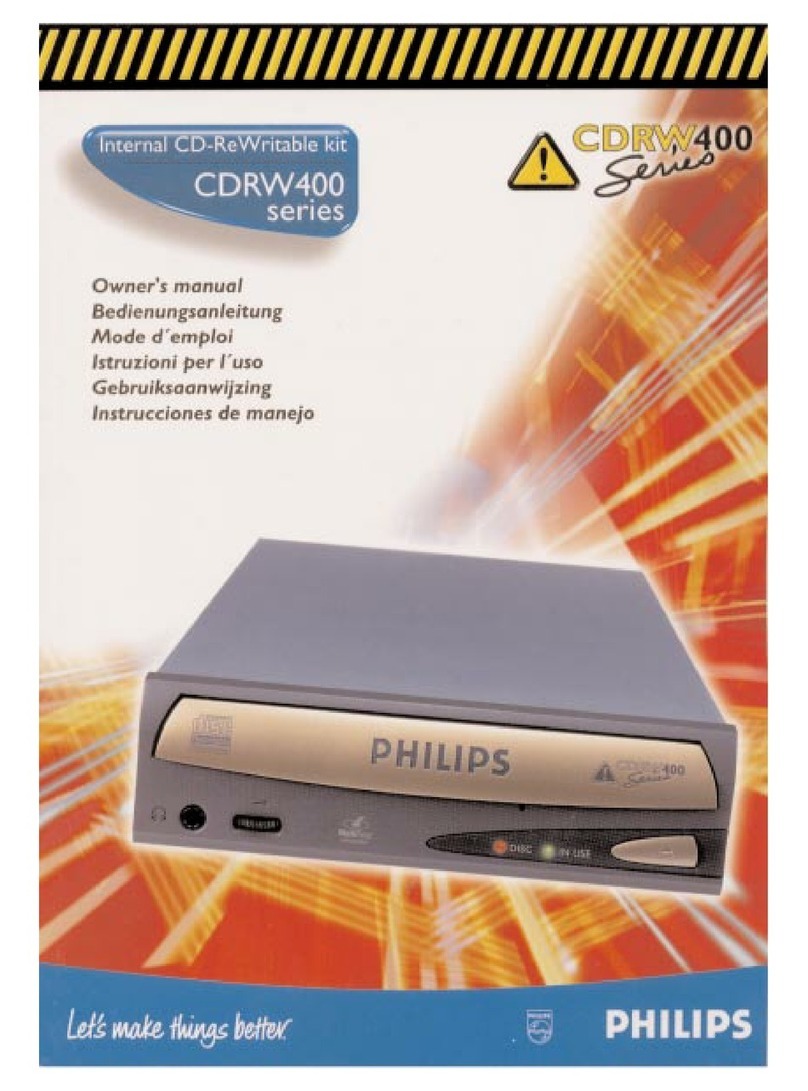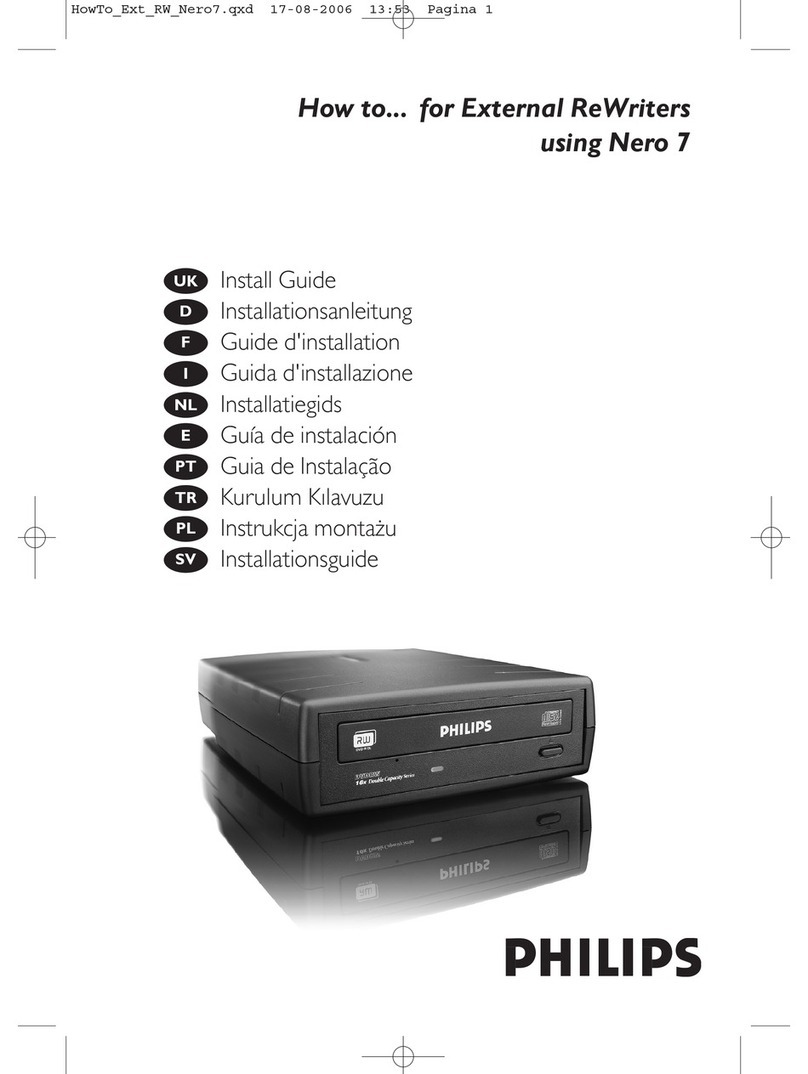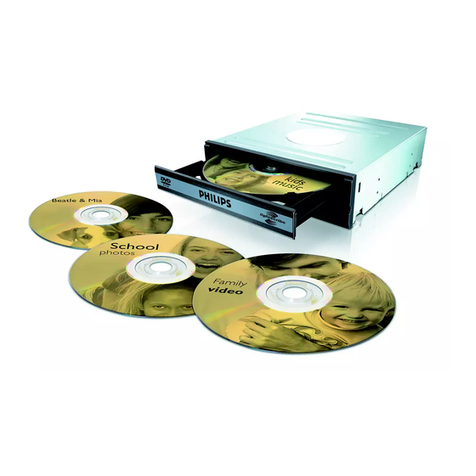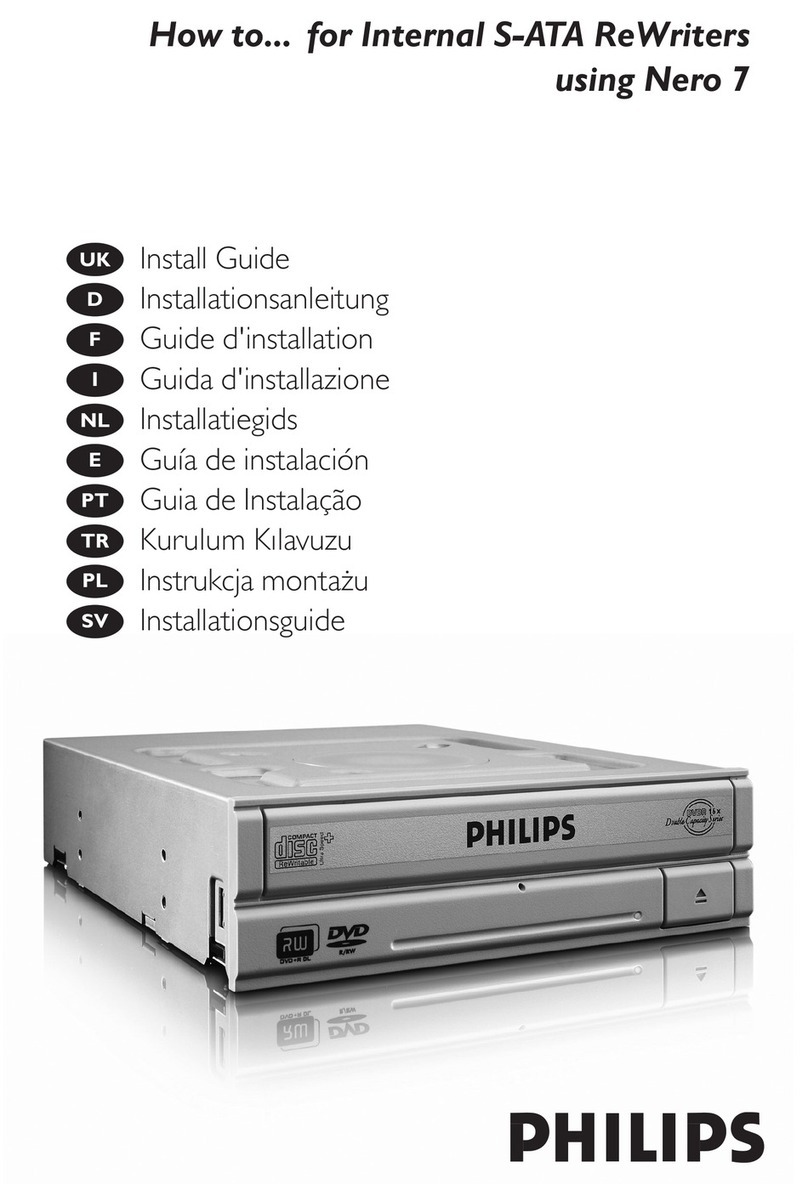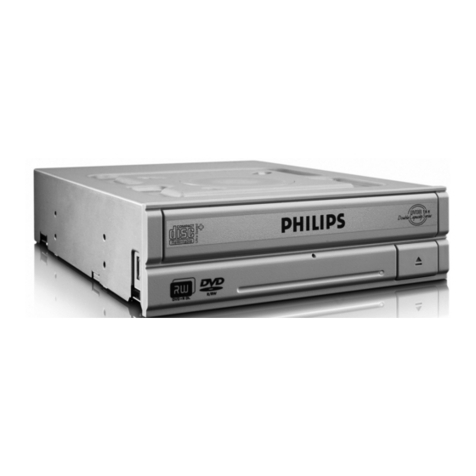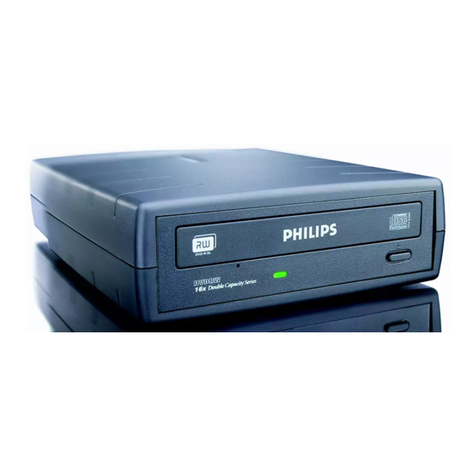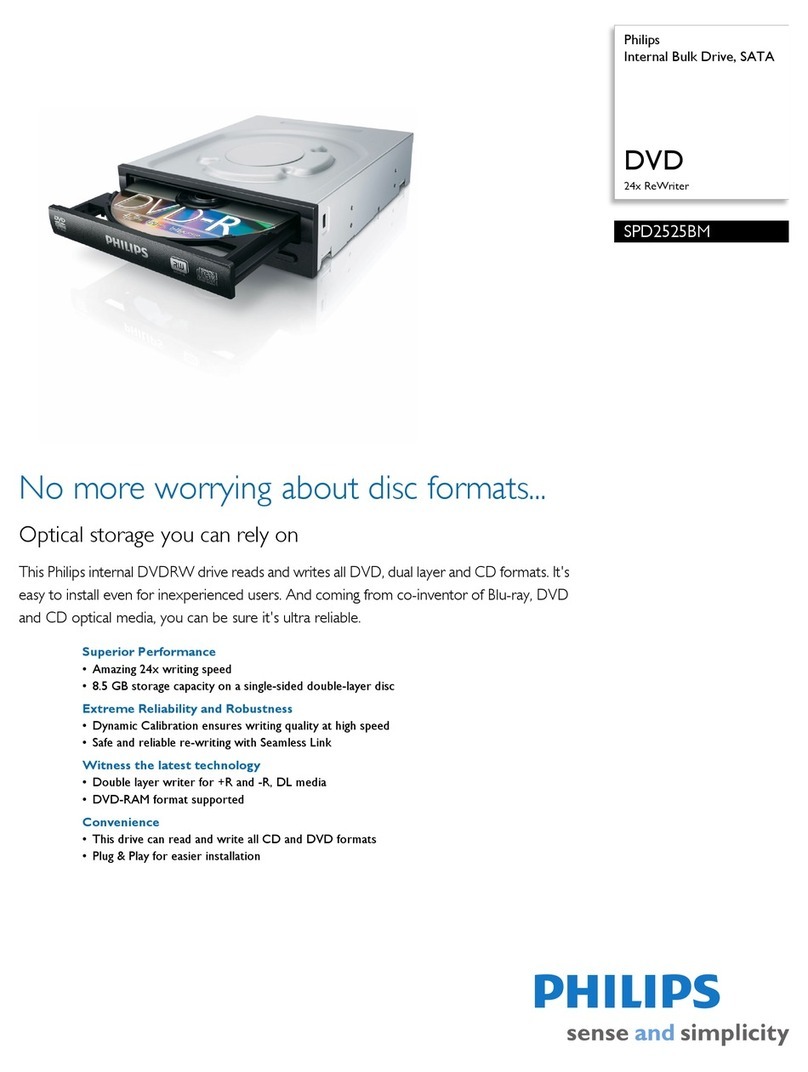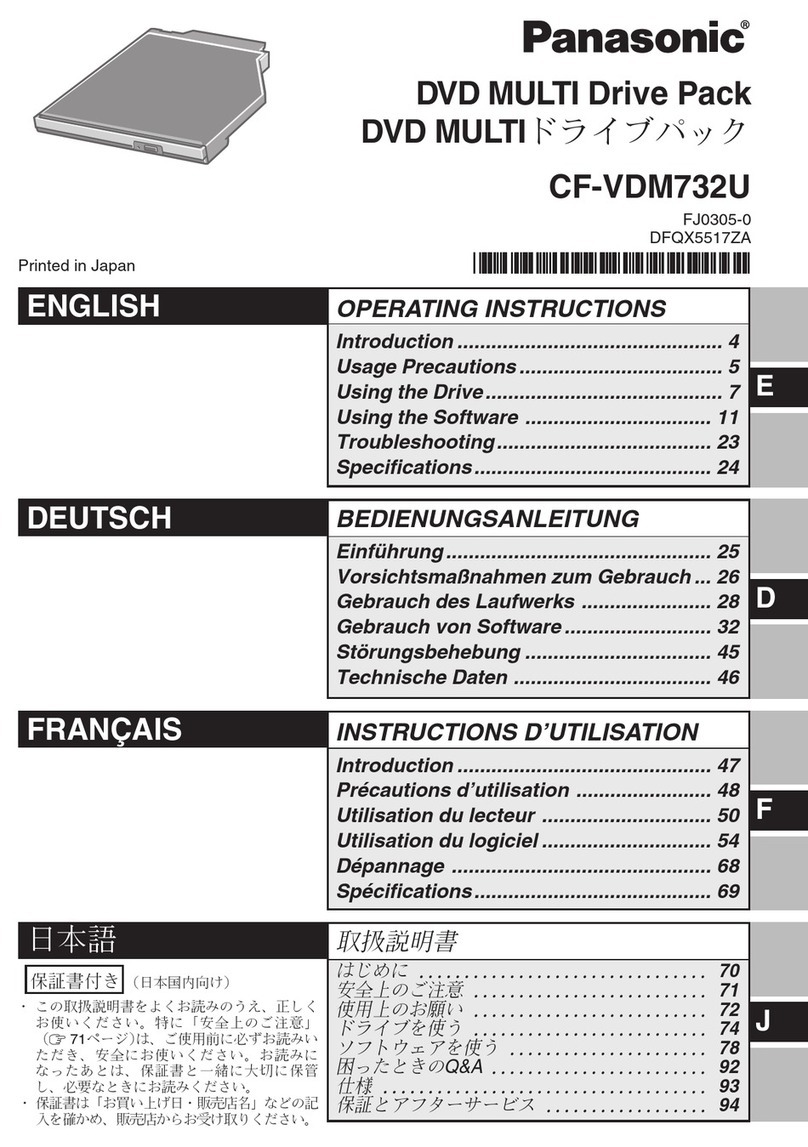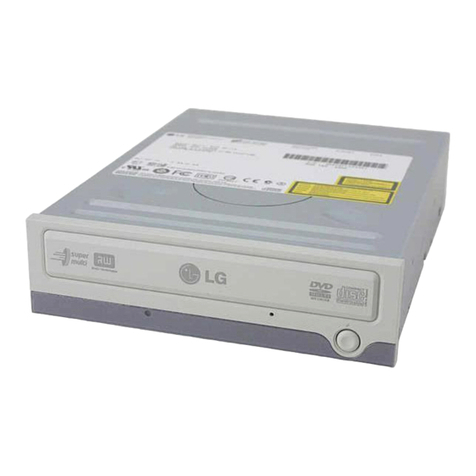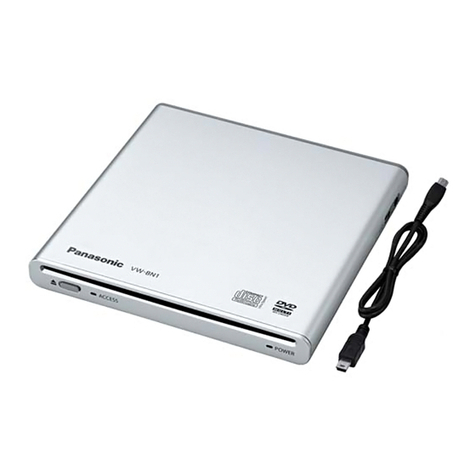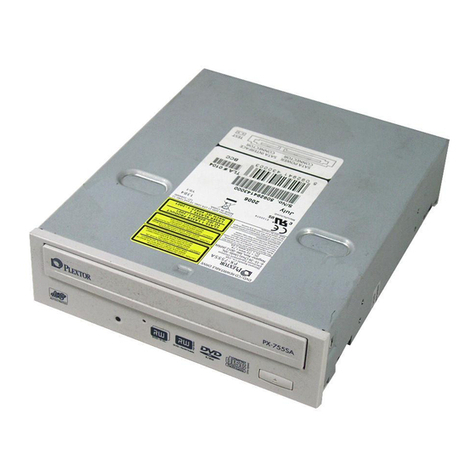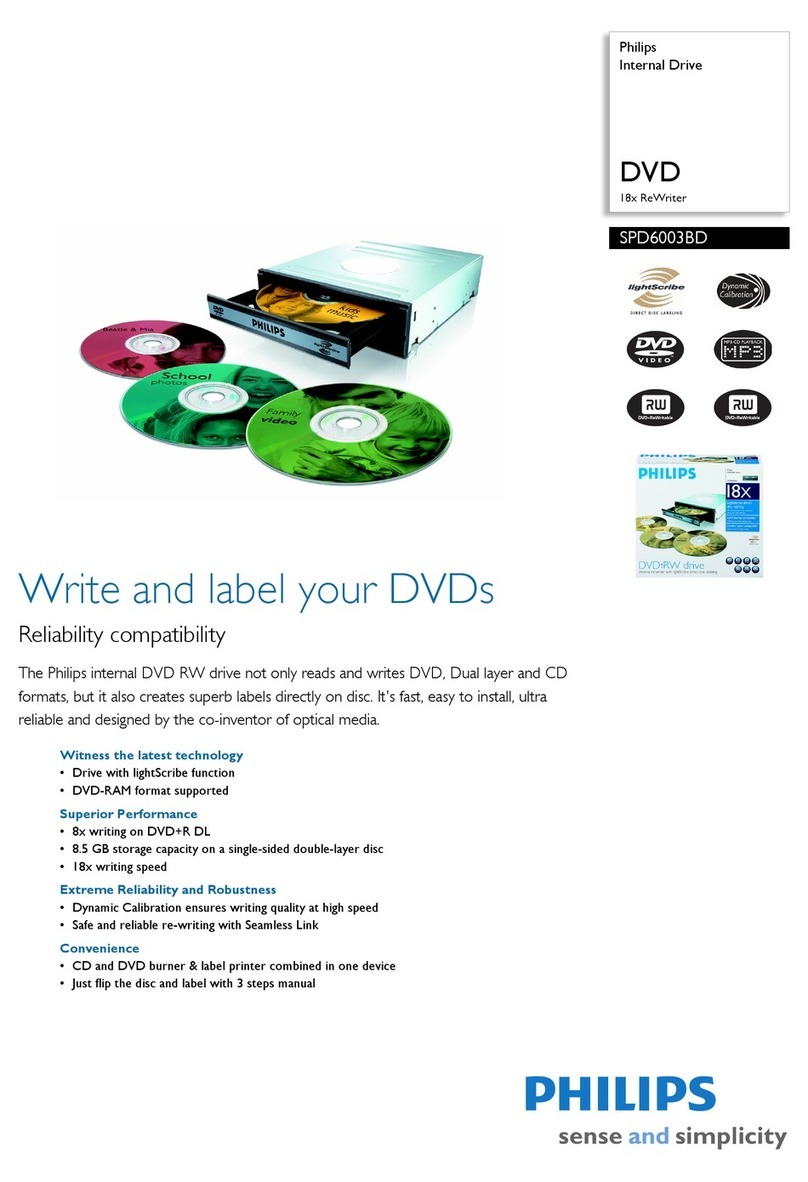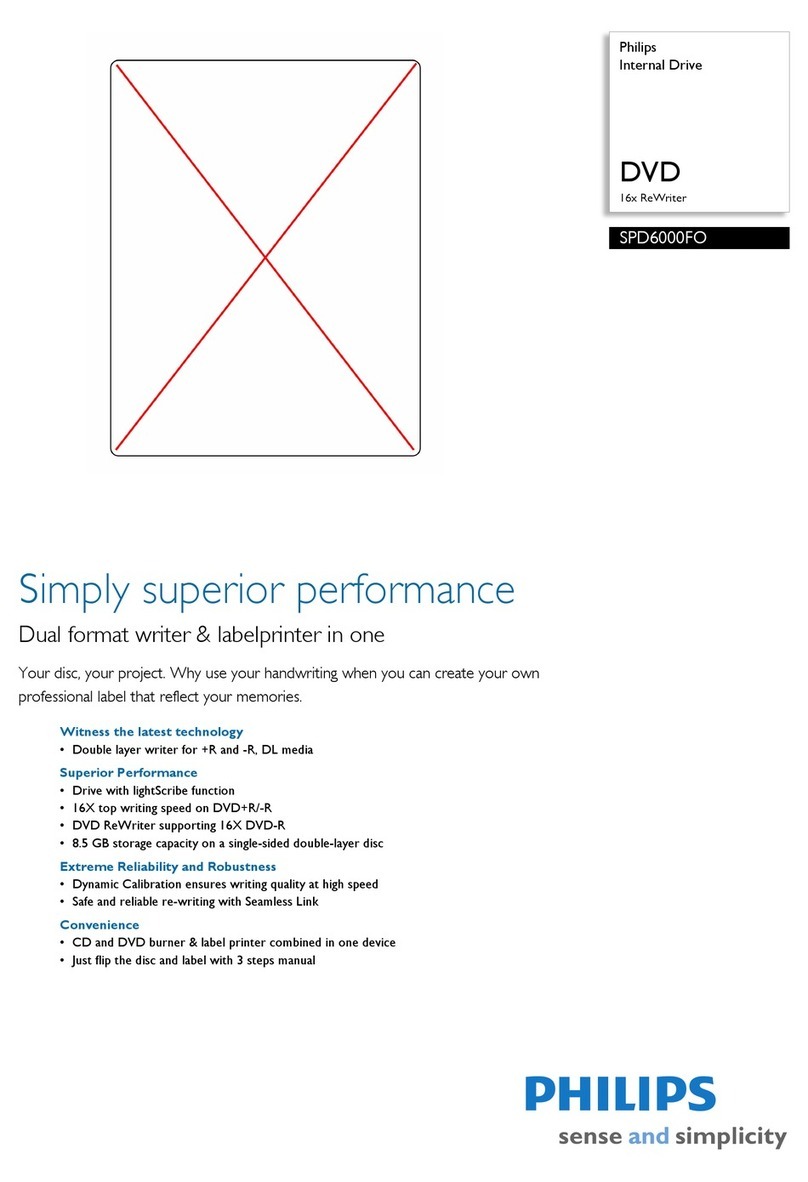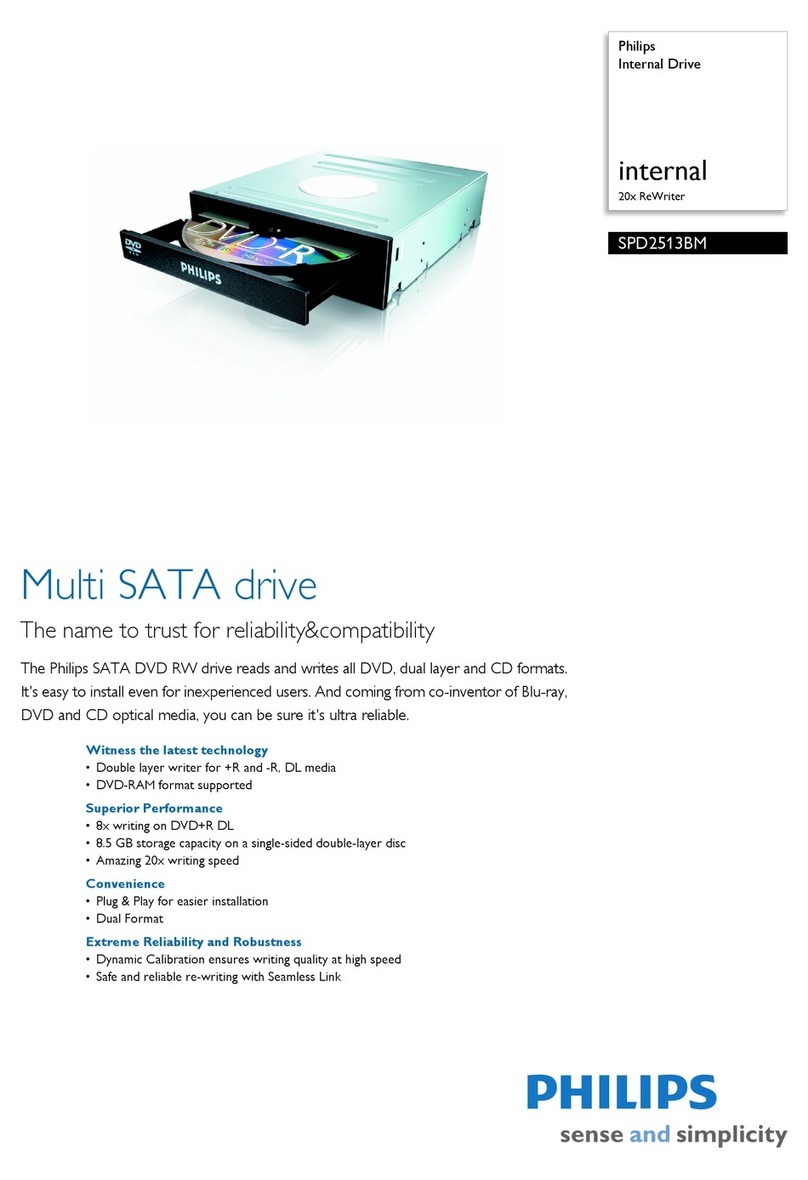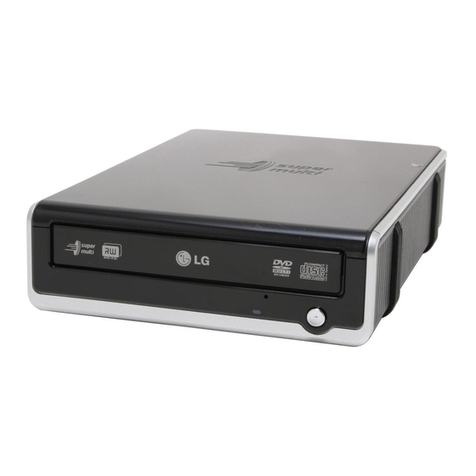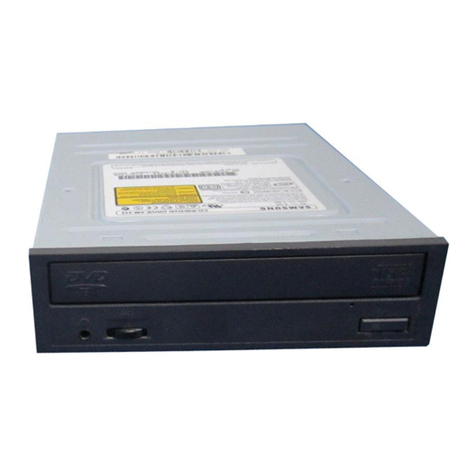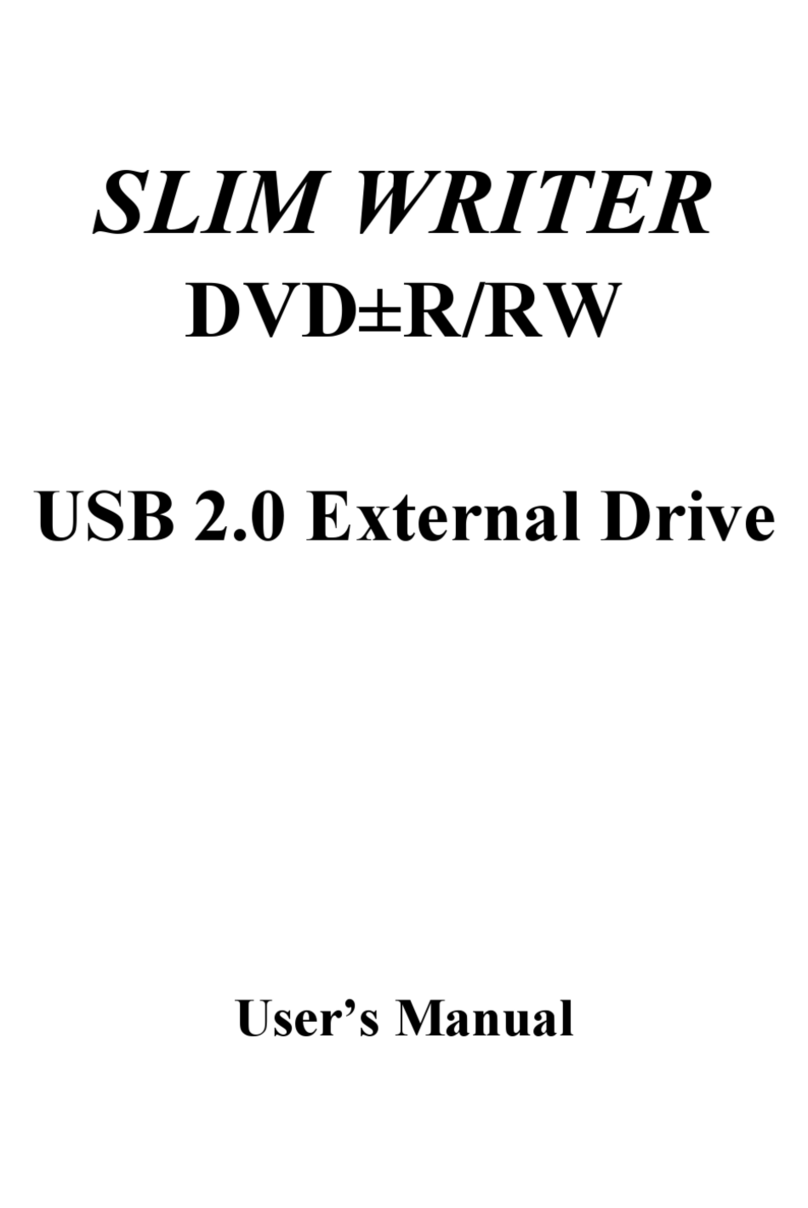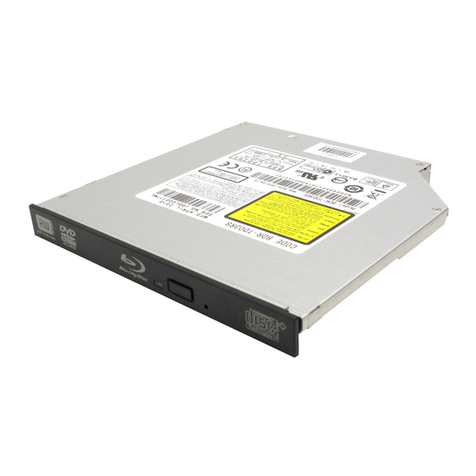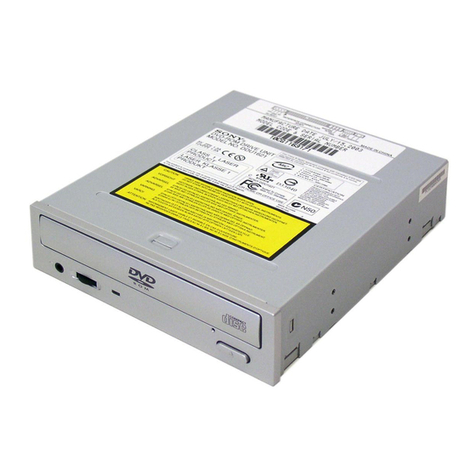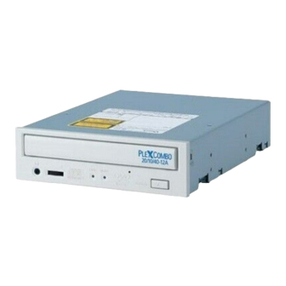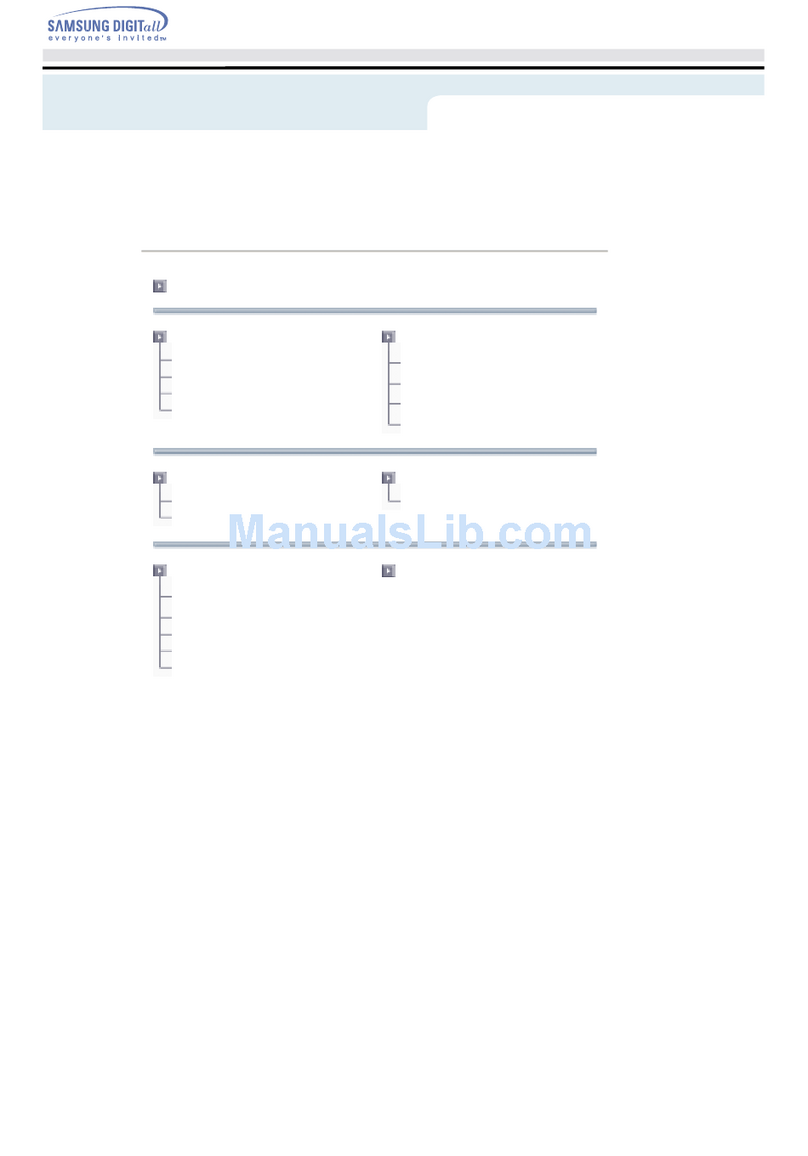
INTRODUCTION
The
VP415 LaserVision player
(ROM
disc drive) is primarily designed
for use in interactive computer-controlled systems that exploit the
capabilities of LaserVision as a versatile, high-quality storage/retrieval
medium.
Communication
between
the VP415
and
a
controlling
computer
is via
standard
RS232-C or SCSI interfaces, both of which
are fitted to the player.
The
player can be used with ordinary
LaserVision discs containing audiovisual information, or
LV-ROM
discs,
which
contain
data
as
well
as
audiovisual
information.
This
data
takes
the
place
of
the
audio
channel
on
some
or
all
sections
of
the disc.
The
VP415 can of course be used for direct playback of LaserVision
CAV
(Active play) or CLV
(Long
play) discs. In this respect it has
extensive
program
control, with search and memory facilities,
conveniently
operated
from
the
remote
control
handset.
THE
LASERVISION
SYSTEM
LaserVision
is
the
only
audiovisual
playback
system
using
optical
(laser
beam)
readout.
The
laser beam, concentrated to an almost
inconceivably fine point (60 times finer
than
a
gramophone
stylus),
reads very densely-packed information
under
the transparent surface
of
the
LaserVision
disc.
The
picture reproduced is of high quality with 2-channel
mono
or
stereo
sound.
There
isno
wear
to the disc or 'pick-up', and the discs are
extremely resistant to scratches, dust and fingerprints.
Types
of
LaserVision disc
Three
types of disc are available and the player will
operate
with any of these:
1. NormalCAV(Active play) discsspin at a constant speed of 1500
r.p.m.
They
have a maximum capacity of 54 000 pictures
per
side
(36 minutes played at 25 pictures per second) and offer special
LaserVision effects such as still, slow-motion, reverse play, fast
forward, fast reverse and goto picture or chapter number.
2. CLV (Long play) discs spin at a speed which gradually decreases as
the disc plays.
They
offer
continuous forward play only, but with
lime and chapter search, and the advantage of an increased playing
time of 1 hour per side.
3. LV-ROM. This isa type of CAV (Active play) disc, with data
replacing some
or
all
parts
of the audio track.
Their
maximum
capacity is324 Mbytes of user data and 54 000 pictures.
INTERACTIVE
USE
The
VP415 allows all the facilities of the LaserVision system to be
controlled by a computer. In this way, the
computer
can control the
picture, sound and LV-ROM data. Play is controlled by picture
numbers,
chapter
numbers, autostops or a
computer
program. The
program
can be
activated
by
the
VP415
remote
control
handset,
or
via
the computer keyboard, or other computer peripheral.
Communication with the VP415 isachieved using either a special code
known as F-code, or LV-DOS commands (via the SCSI interface).
The
F-code instruction set
enables
commands to be sent (as ASCII
characters) to the player; some of these commands causing responses
to be
returned
to the computer. Using F-code commands, a VP415 can
participate in an interactive program with any computer system that is
loaded with the necessary program.
LV-DOS
commands
allow
the
VP4I5
to
be
used
as
an
LV-ROM
memory
device in a
computer
system.
Both
data
retrieval from disc
and playercontrol are possible.
FEATURES
OF
THE
VP415
RGB
output/PAL-RGB
decoder
The VP415 allows the best possible picture quality to be obtained from
aLaserVision disc, by employing abuilt-in
PAL-RGB
decoder. Within
the
LaserVision
format,
video
information
is
stored
on
the
disc
in
PAL
encoded form. This can cause problems when the discisplayed in 'still
frame' or 'slow motion', or any other non-standard playing mode,
because the PAL 8-field sequence becomes destroyed. In order to
correct this sequence such that a
monitor
can understand it and
reproduce correct colour, many players incorporate a
'PAL
Modifier'.
This piece of circuitry corrects the PAL sequence, but in doing so,
reduces
the
video
bandwidth,
and
introduces
other
unwanted
effects,
e.g. echoes.
The VP4I5 tackles this problem by employing a fast-locking PAL-
RGB
decoder. Having this device built-in, allows its characteristics to
be fully optimised to give the highest possible picture quality from the
disc, even in non-standard playing modes.
The result is an RGB output giving the full 5 MHz video bandwidth in
all playing modes. The benefit is particularly valuable when viewing
video material such as maps with fine text.
RGB output also lends itself to simpler mixing with computer graphic
output (also RGB), in external equipment ifrequired.
Sync
pulse
generator
The VP415 contains an internal sync pulse generator (SPG) which may
either free-run, or in the presence of a suitable reference signal, lock
itself to the external reference (Genlock).
The SPG provides freshly-generated line and field sync pulses at the
player's video output at all times. Following the decoding process from
PAL to RGB (see above), fresh sync pulses are inserted into the RGB
signal, which is
available
at
the
Euroconnector
socket.
Therefore
a
stable
output
from the player is
guaranteed
at all times.
Genlock
Genlock allows the fieldand line syncpulsesfrom the player output to
be synchronised with an external reference signal. It ensures correct
overlayof videosignalsand can also prevent picture jump or roll. The
reference signal, comprising line and field syncs (negative-going)
should be applied to (i) either of the twoSYNC INsockets or (ii) pin4
of the RGB (TTL) IN socket. A horizontal shiftof the overlay picture
is achieved by adjustingthe
H-SHIFT
control situated at the
rear
of the
player.
Note: The player may take up to 2 seconds initially to effectively lock
to a reference signal.
eves
output/RGB-PAL
encoder
The
VP415
contains
an
RGB-PAL
encoder.
This
takes
the
RGB
output from the player (prior to the video mixingstage) and encodes it
into a CVBS signal using fresh sync pulses from the internal SPG.
The
signal available at the CVBS
output
is thus totally stable. It does
however have a reduced bandwidth in all playing modes (approx 3
MHz).
Electronic
timebase
corrector
AC.C.D. (charge coupled device) timebase corrector is employed to
provide correction of timing errors always present in the signal read
from the video disc. This replaces the more traditional tangential
mirror (mechanical method) allowing for a smaller, lighter optical
system. This reduction in mass allows the optical readout unit to track
the disc faster and thus reduces picture access time.
